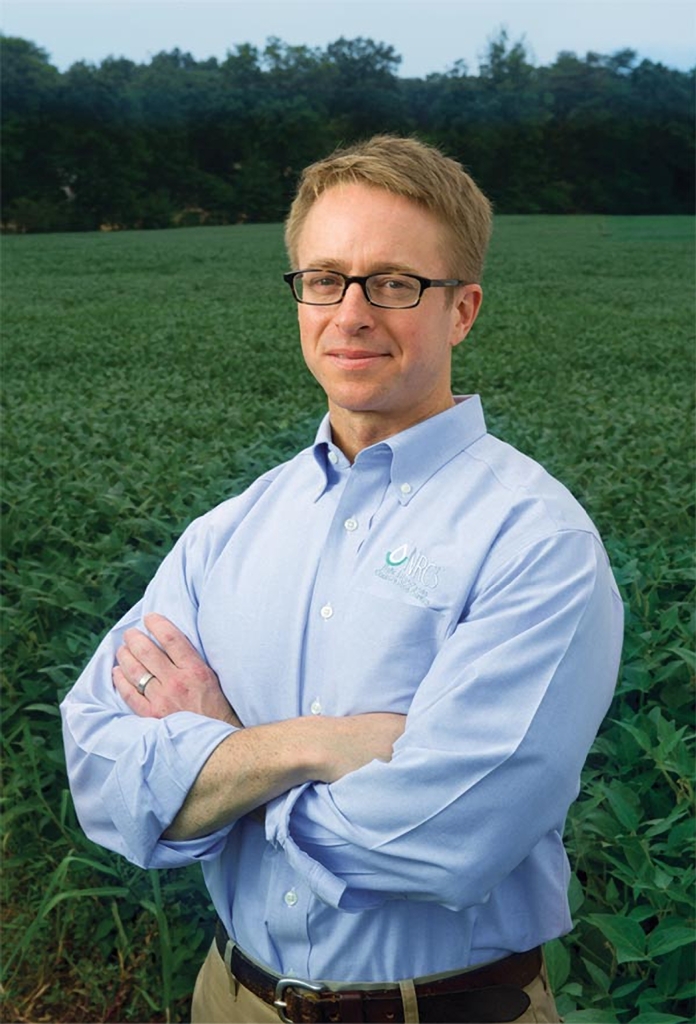JASON WELLER has served as Chief of the Natural Resources Conservation Service (NRCS) since 2013, overseeing programs that help protect the environment, preserve our natural resources and improve sustainability through voluntary conservation on agricultural and forest lands. Prior to joining NRCS, Jason worked on agricultural, forestry and environmental protection issues as a staff member in the U.S. House of Representatives, White House Office of Management and Budget and California State Legislature. During his tenure at NRCS, Jason has broadened the agency’s efforts to development new public-private partnerships to drive private lands conservation.

What led you to want to work for the Natural Resources Conservation Service?
I’m very proud to be part of the NRCS team, as in my view it is the hardest working, most dedicated and, ultimately, most impactful federal agency. We are the nation’s — if not the world’s — largest and most effective private lands conservation organization. And, we are an example of government at its best: investing in and empowering family farm, ranch and forest operations, helping them be economically and environmentally sustainable.
What was your favorite aspect of your job?
Every time I travel to the field and meet our local field office staffs, I get inspired. I always return home pumped. Our conservation professionals work out of about 2,800 field offices in all 50 states, Puerto Rico and U.S. Territories. We essentially serve landowners in every county in the nation. And, these professionals are dedicated and passionate about helping family operations be more successful while also ensuring the long-term health of our natural resources.
What was the most difficult moment or encounter that you experienced in pursuit of your work?
The past several years have, at times, been a challenging time in the federal government. We have had sizable budget and staff reductions, which has ripple effects for our customers and our staffs. Ultimately, it means we can’t help as many families and communities as we would have liked. There are a lot of opportunities to make hugely valuable conservation investments, and we have had to make difficult choices.
That said, I am very grateful for the significant resources the tax paying public provides our agency, and I am proud that we are making a difference for individual operations, communities and regions of the country.
What do you think is the biggest issue facing national forests today?
There are an array of challenges facing forests, such as: a changing climate that results in severe swings in temperature and precipitation; insect and disease infestations; the lack of fire in fire-adapted ecosystems; ever expanding commercial and residential development that expands the wildland-urban interface and complicates forest management and firefighting; the challenging economics of timber production and forest management; and changing land ownership patterns and subdivision of private tracts of forested lands. Ultimately, finding approaches that improve the economics of forest products and effective forest stewardship are what is needed to help address many of these challenges. But, no sector of the economy or unit of government has the individual resources and answers to address these challenges. That is why it is crucial that we improve our partnerships and better leverage our expertise, relationships and resources.
Where is your favorite spot to experience nature and why?
I love the outdoors. It doesn’t take much for me, as we can find beauty everywhere. But, if I had to choose one place, it would be hiking the backcountry trails in the Sierra Nevada Mountains in California. They are uniquely beautiful, and I’m always trying to scratch the itch to get back to the forests and high-elevation lakes of the Sierras.
What is the most surprising thing that you have learned or discovered?
The passion and commitment of NRCS’s employees has been the most rewarding discovery. I had always known them to be caring about the agency’s mission — helping people help the land — but until I got to know the agency and its people more closely, I had no concept about how our focus on assisting families who make a living working the land resonates and reverberates throughout NRCS.
Do you have a favorite story from your years in the field?
There are so many inspiring experiences. Too many to recount. But as an example, I had the honor to visit the Santo Domingo Pueblo in New Mexico, where NRCS had partnered with the Bureau of Reclamation to make repairs and improvements to the Pueblo’s irrigation systems. Through our work, we upgraded a centuries-old canal system that was highly inefficient and in disrepair into a modern underground, gravity- pressurized system. As a result of the project, the Pueblo was able to irrigate fields, which used to take days, in a matter of hours and expand production on an additional 200 acres of crop land, all while saving significant acre-feet of water in a very drought-prone and arid region of the country.
This project made a world of difference to the people of the Pueblo, as it provided new economic opportunities for young farmers to return to, and stay in, their community. And, it provided for incredibly valuable, culturally appropriate food production for a community that otherwise has very low access to nutritious and affordable food. This project highlighted for me how natural resource conservation can flip our mission around — from “helping people help the land” to “helping the land help the people.”
To celebrate, the entire Pueblo turned out for a massive fiesta with insanely delicious foods. We all ate like kings. It was a good day.
Editor’s Note: Since the original publication date, former Chief Weller is no longer the active Chief of NRCS.